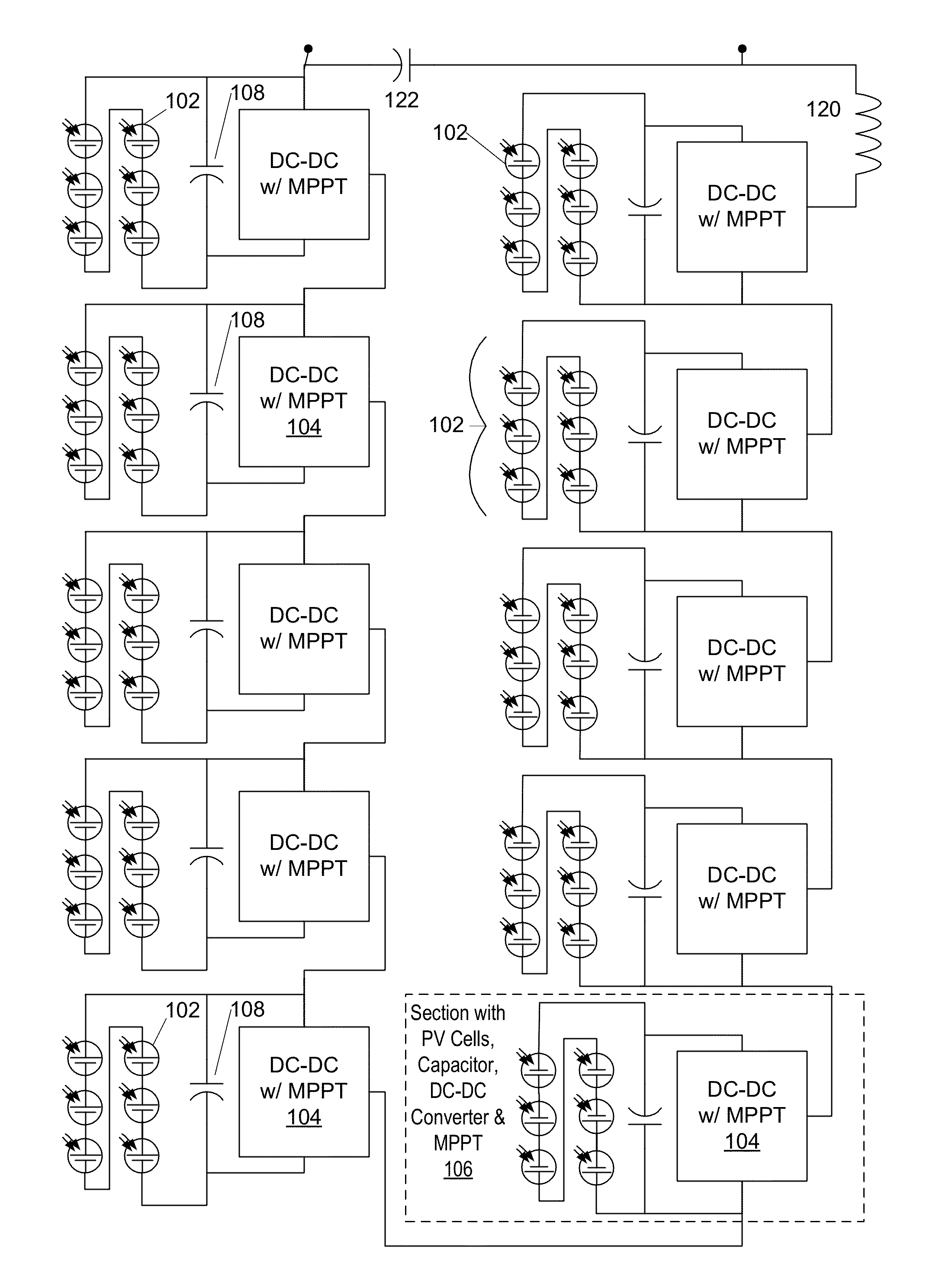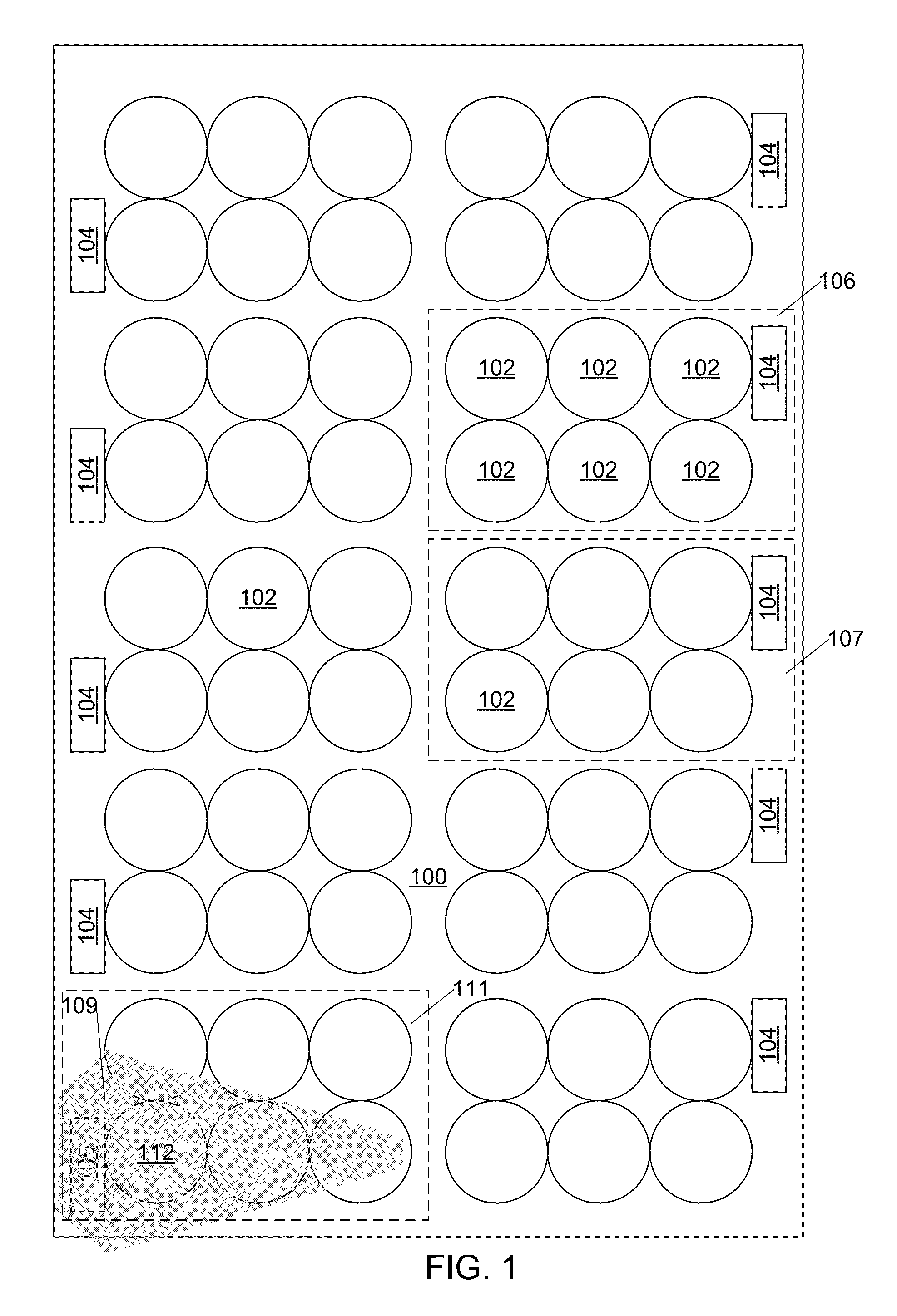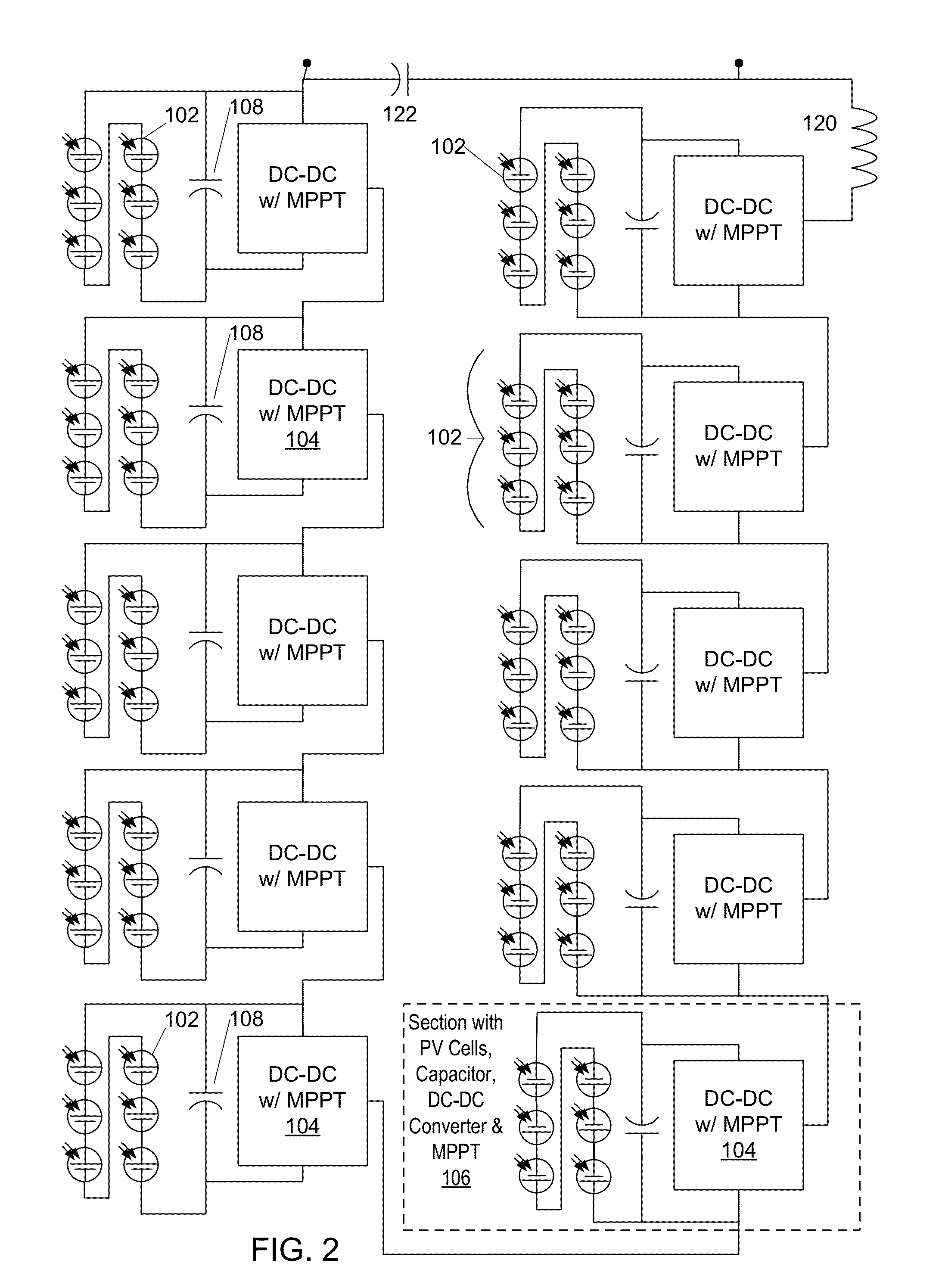Integrated photovoltaic panel with sectional maximum power point tracking
a photovoltaic panel and integrated technology, applied in the direction of d ac network circuit arrangement, semiconductor devices, etc., can solve the problems of insufficient power supply of pv panels, insufficient power supply of pv cells, etc., to achieve the effect of optimizing power transfer
- Summary
- Abstract
- Description
- Claims
- Application Information
AI Technical Summary
Benefits of technology
Problems solved by technology
Method used
Image
Examples
Embodiment Construction
[0033]An integrated photovoltaic (PV) panel 100 is illustrated in FIG. 1. This panel has a quantity of PV cell units 102, such as may be manufactured from single-crystal silicon, although alternative embodiments may have PV cell units comprising other materials including II-VI, III-V, and materials such as copper indium gallium diselenide. In an embodiment, the PV cell units are fabricated as single cells, in an alternative embodiment each of the cell units are constructed of multiple PV cells in single-layer or multiple-layer form and may have integrated series and / or parallel interconnect internal to each cell unit. Each cell unit has at least one positive terminal and at least one negative terminal through which power generated from light incident on the cell unit can be extracted from the cell unit.
[0034]The cell units 102 are organized into several sections, such as section 106 and section 107, where each section has at least one cell unit 102, and typically has several cell un...
PUM
 Login to View More
Login to View More Abstract
Description
Claims
Application Information
 Login to View More
Login to View More - R&D
- Intellectual Property
- Life Sciences
- Materials
- Tech Scout
- Unparalleled Data Quality
- Higher Quality Content
- 60% Fewer Hallucinations
Browse by: Latest US Patents, China's latest patents, Technical Efficacy Thesaurus, Application Domain, Technology Topic, Popular Technical Reports.
© 2025 PatSnap. All rights reserved.Legal|Privacy policy|Modern Slavery Act Transparency Statement|Sitemap|About US| Contact US: help@patsnap.com



